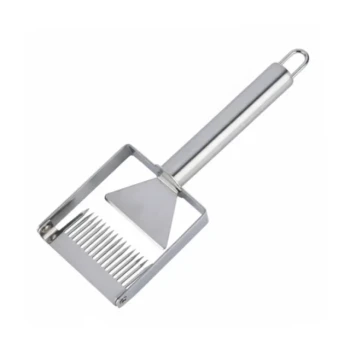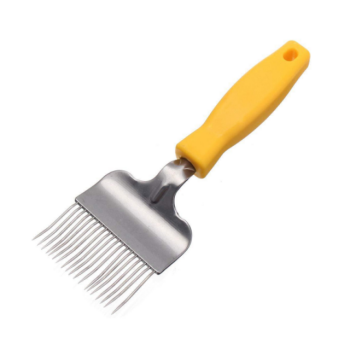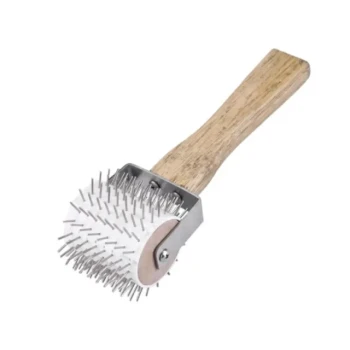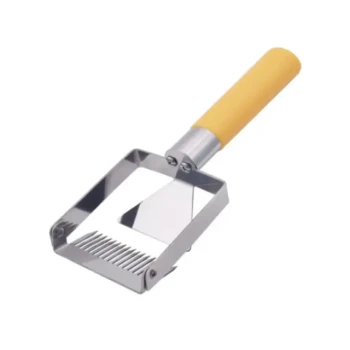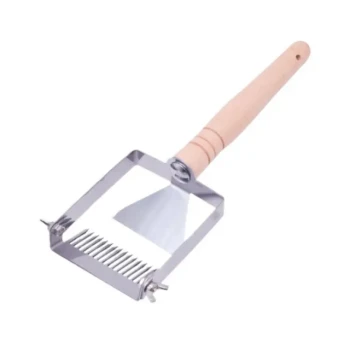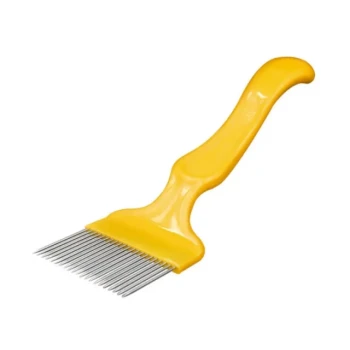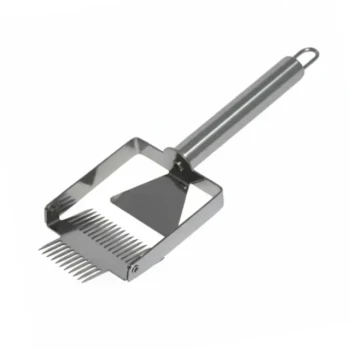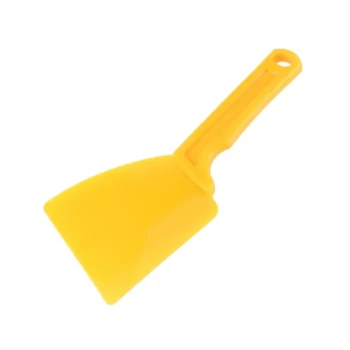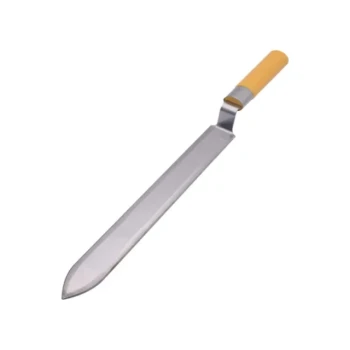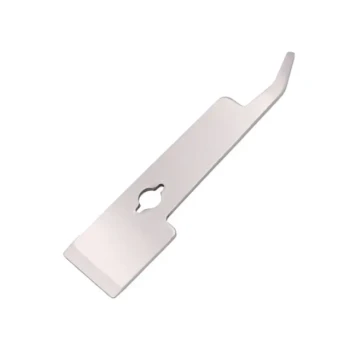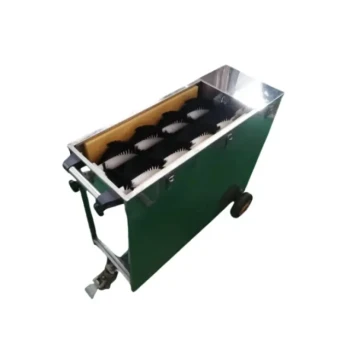At its core, a honey refractometer is a specialized optical instrument used to measure the moisture content of honey. It provides a simple, immediate, and scientific way for a beekeeper to determine if their honey is ready for harvest and stable enough for long-term storage. Without this data, beekeepers risk bottling honey with too much water, which will inevitably lead to fermentation and spoilage.
The central challenge for any beekeeper is preventing harvested honey from fermenting. A honey refractometer solves this by replacing traditional guesswork with a precise moisture reading, ensuring the final product will remain stable and high-quality.
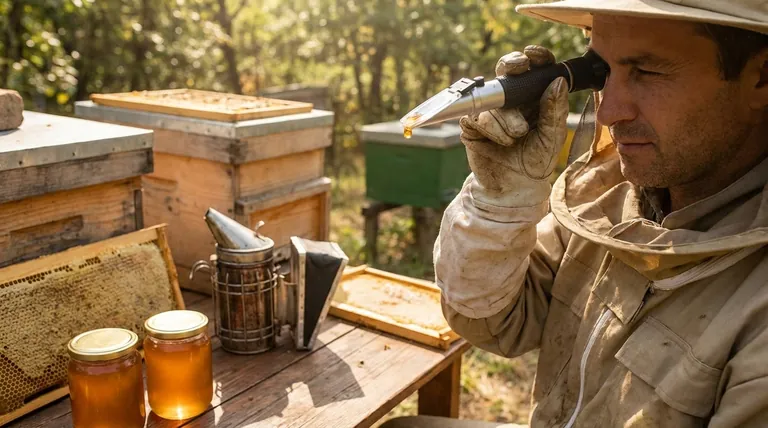
Why Moisture Content is the Critical Factor
Honey is a super-saturated solution of sugars. Its low water content and natural acidity create an environment where bacteria and yeast cannot survive. However, this delicate balance can be easily disrupted.
The Science of Fermentation
All raw honey contains dormant, naturally occurring osmophilic yeasts. If the water content rises above a certain threshold—typically around 19-20%—these yeasts can become active.
They begin to metabolize the sugars in the honey, producing alcohol and carbon dioxide. This process is called fermentation, and it results in honey that is fizzy, sour-smelling, and spoiled.
The Problem with Guesswork
Traditionally, beekeepers rely on a visual cue: bees will cap the honeycomb cells with wax when the honey inside has been dehydrated to the correct moisture level.
While the "80% capped rule" is a reliable guideline, it isn't foolproof. Factors like high ambient humidity can result in capped honey that still has a moisture content too high for stable storage. A refractometer eliminates this uncertainty.
Crystallization vs. Spoilage
Low moisture content can lead to honey crystallizing more quickly. This is a natural, reversible process that does not affect the quality of the honey.
High moisture content, however, leads to fermentation. This is an irreversible process that ruins the honey, making it unfit for consumption.
The Practical Application for Beekeepers
The importance of a refractometer scales with the beekeeper's goals, but its core function—risk prevention—remains the same for everyone.
For the Hobbyist Beekeeper
For a hobbyist, the primary goal is to ensure the honey they harvest for themselves, family, and friends will not spoil in the jar. A refractometer provides peace of mind and protects the significant time and effort invested in caring for the bees. It transforms a hope into a guarantee of quality.
For the Commercial Apiary
For a commercial beekeeper, a refractometer is non-negotiable. Honey sold to the public must meet established quality and grade standards, which include a maximum moisture content (for example, U.S. Grade A honey must be 18.6% water or less).
Using a refractometer is a critical quality control step that protects brand reputation, ensures consumer safety, and prevents significant financial loss from a spoiled batch.
Understanding the Trade-offs
While an essential tool for many, it's important to view the refractometer as a specific instrument with a clear purpose.
The Cost vs. The Risk
A honey refractometer represents an upfront cost. However, this investment is minor when weighed against the risk of losing an entire honey harvest to fermentation. For most beekeepers, the cost of the tool is easily justified by preventing the loss of just a few gallons of honey.
A Tool for Diagnosis, Not a Cure
A refractometer provides a precise data point; it tells you the moisture content. It does not lower the moisture content itself. If a reading is too high, the beekeeper must still take action, such as waiting longer to harvest or using dehumidifiers in the processing room to help cure the honey further.
Making the Right Choice for Your Apiary
Ultimately, the decision to use a refractometer comes down to your specific goals and your tolerance for risk.
- If your primary focus is selling honey commercially: A refractometer is an essential, non-negotiable tool for meeting legal standards and ensuring product quality.
- If your primary focus is hobby beekeeping: It is a highly recommended investment that removes guesswork and guarantees the long-term stability of your harvested honey.
- If your primary focus is learning and data: Using this tool provides invaluable insight into how weather, humidity, and nectar flow affect your specific hives and location.
This simple device empowers you to move from hoping your honey is ready to knowing it is.
Summary Table:
| Key Aspect | Why It Matters for Beekeepers |
|---|---|
| Primary Function | Measures honey moisture content with precision. |
| Critical Threshold | Prevents fermentation if moisture is below 19-20%. |
| For Hobbyists | Guarantees personal honey harvests remain stable. |
| For Commercial Apiaries | Essential for meeting Grade A standards (e.g., ≤18.6% moisture). |
| Main Benefit | Replaces guesswork with scientific data to protect your harvest. |
Protect your honey harvest and ensure top quality for your customers. HONESTBEE supplies professional-grade honey refractometers and beekeeping equipment to commercial apiaries and distributors through our wholesale-focused operations. Contact our team today to discuss your apiary's needs and discover how our reliable tools can safeguard your product and your profits.
Visual Guide
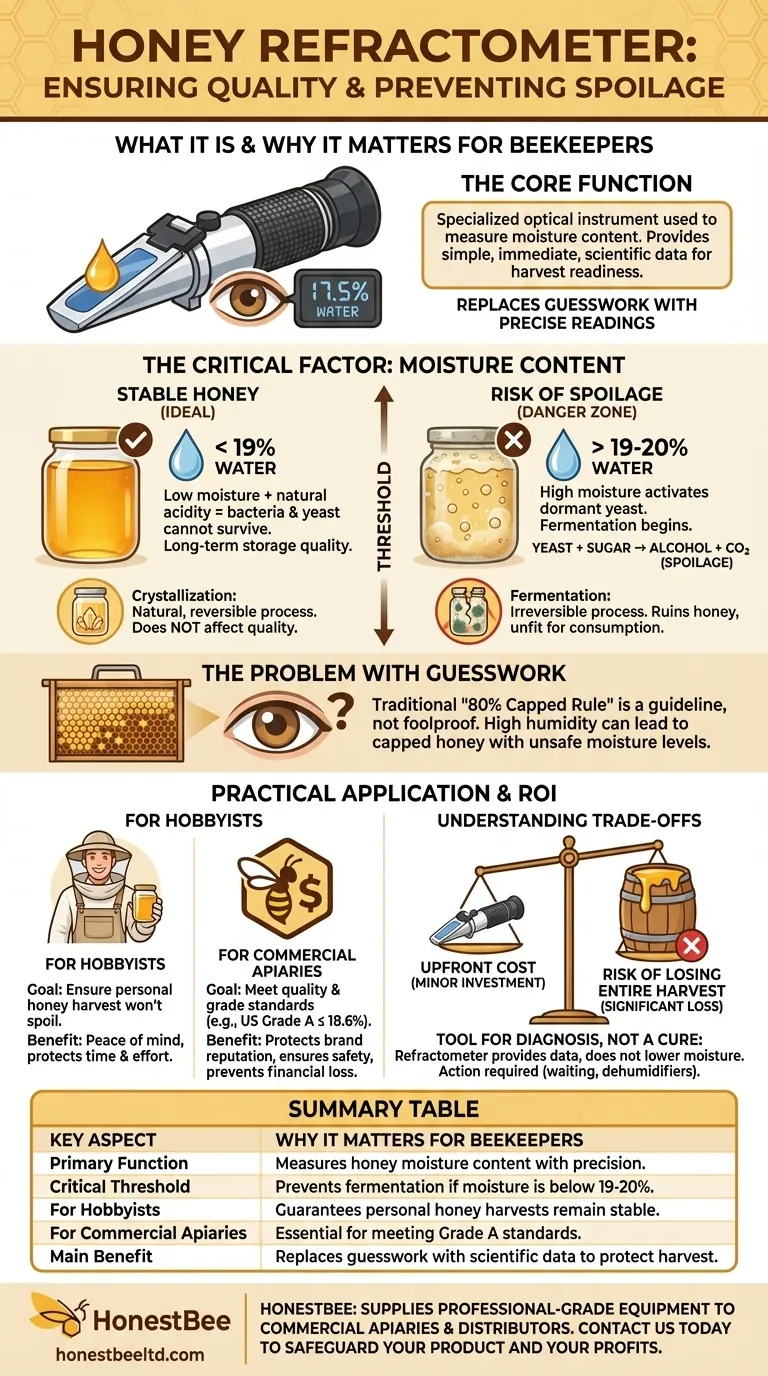
Related Products
- All-Stainless Steel Pivoting Honey Uncapping Fork for Beekeeping
- Professional Bent Tine Honey Uncapping Fork with Ergonomic Grip
- Professional Honey Uncapping Roller for Efficient Harvesting
- Stainless Steel Pivoting Honey Uncapping Fork with Plastic Handle
- Adjustable Stainless Steel Honey Uncapping Fork with Scraper for Beekeeping
People Also Ask
- What is a decapping knife used for? Unseal Honeycomb for an Efficient Harvest
- What to use to uncap honey? Choose the Right Tool for Your Apiary
- What are the advantages of an uncapping fork? Achieve Precision Honey Harvesting for Your Apiary
- What is the importance of choosing the right uncapping method for beginner beekeepers? Maximize Your Honey Yield & Save Time
- What is the primary use of an uncapping fork in beekeeping? A Guide to Precision Honey Harvesting
